- Why Pruning Tendrils is Important for Cucumber Bushes
- 1. Enhanced Air Circulation
- 2. Improved Light Penetration
- 3. Better Fruit Production
- 4. Preventing Plant Overcrowding
- 5. Easier Harvesting
- The Benefits of Pruning Tendrils
- 1. Improved Air Circulation
- 2. Enhanced Sunlight Exposure
- 3. Better Pest and Disease Management
- 4. Enhanced Cucumber Quality
- 5. Easier Harvesting
- When to Prune Tendrils on Cucumber Bushes
- 1. Start pruning when the plant is well-established
- 2. Look for excessive growth and tangle
- 3. Prune in the morning or evening
- 4. Remove only the damaged or excessively long tendrils
- 5. Avoid pruning too heavily
- Step 1: Prepare Pruning Tools
- Step 2: Identify the Tendrils to Prune
- Step 3: Prune the Tendrils
- Step 4: Properly Dispose of Pruned Tendrils
- Here are some steps to follow for proper disposal:
- Step 5: Monitor and Maintain Pruned Tendrils
- 1. Observing Growth
- 2. Removing New Tendrils
- 3. Maintaining Tendril Length
- 4. Supporting Tendrils
- 5. Inspecting for Diseases or Pests
- “Question-Answer”
- Why is it important to prune tendrils on cucumber bushes?
- When is the best time to prune tendrils on cucumber bushes?
- How should I prune the tendrils on my cucumber bushes?
- What are the benefits of pruning tendrils on cucumber bushes?
- Can I prune the tendrils on my cucumber bushes too much?
- “Video” Pruning Cucumbers Plants And Trellising Them! Increase Production!
Cucumbers are a popular vegetable to grow in home gardens. They are easy to cultivate and provide a delicious addition to salads and sandwiches. However, if left unattended, cucumber plants can quickly become unruly and take over your garden space. That’s where pruning comes in. By properly pruning the tendrils on cucumber bushes, you can help control their growth and maximize their productivity.
Pruning is the process of removing unwanted parts of a plant to promote healthier growth and better fruit production. When it comes to cucumber plants, the tendrils are one aspect that often needs attention. Tendrils are thin, coiling structures that help the plant climb and support itself. While they serve a purpose, they can also become problematic if not properly managed.
One reason to prune cucumber tendrils is to redirect the plant’s energy towards fruit production. If left unchecked, tendrils can overtake the plant and divert resources away from developing cucumbers. Additionally, excessive tendrils can create a tangled mess, making it difficult for air to circulate and increasing the risk of disease. Pruning can help prevent these issues and ensure that your cucumber bushes are healthy and bountiful.
When pruning cucumber tendrils, it’s important to use the proper technique to avoid damaging the plant. Start by identifying and removing any tendrils that are growing in a direction that hinders air circulation or access to sunlight. Next, selectively prune tendrils that are overcrowded or competing with fruit-bearing branches. This will help create a more open and organized plant structure.
Why Pruning Tendrils is Important for Cucumber Bushes
Cucumber bushes are known for their sprawling growth habit and vigorous tendrils, which allow them to climb and support themselves as they grow. However, if left uncontrolled, these tendrils can become excessive and lead to a variety of issues for the cucumber plant. This is why pruning tendrils is an important practice for cucumber growers.
1. Enhanced Air Circulation
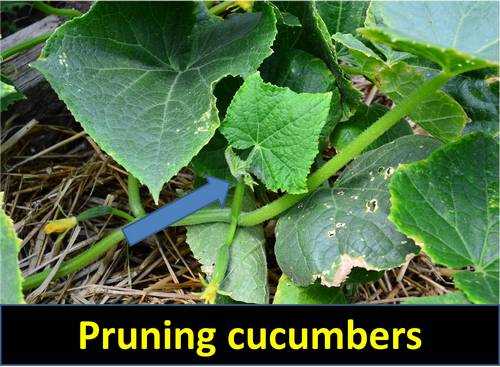
When cucumber plants have dense and overgrown tendrils, air circulation is significantly reduced. This can create a favorable environment for the development and spread of fungal diseases. By pruning the tendrils, growers can improve air circulation within the plant canopy, allowing for better ventilation and reducing the risk of diseases.
2. Improved Light Penetration
Tangled and dense tendrils can also obstruct sunlight from reaching the lower parts of the cucumber plant. Sunlight is essential for photosynthesis, the process by which plants convert light energy into food. By pruning tendrils, growers can ensure that sunlight can reach all parts of the cucumber bush, maximizing its growth and productivity.
3. Better Fruit Production
Pruning tendrils helps in channeling the plant’s energy towards fruit production rather than excessive vegetative growth. By removing excessive tendrils, the plant can allocate more resources towards developing and ripening cucumbers, resulting in a higher yield and better quality fruits.
4. Preventing Plant Overcrowding
Uncontrolled tendrils can quickly overtake and entwine surrounding plants, leading to overcrowding in the garden. Overcrowding can result in competition for nutrients and water, stunted growth, and increased susceptibility to pests and diseases. Pruning the tendrils helps maintain proper spacing between plants, ensuring they have adequate space to grow and thrive.
5. Easier Harvesting
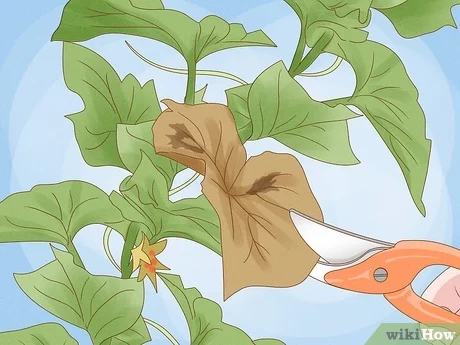
When cucumber tendrils are left unpruned, they can become tangled and make it difficult to locate and harvest ripe cucumbers. Pruning the tendrils not only improves visibility but also makes it easier to access and pick the ripe fruits. This can save time and effort during the harvesting process.
In conclusion, pruning tendrils is an important practice for cucumber growers as it enhances air circulation, improves light penetration, promotes better fruit production, prevents plant overcrowding, and facilitates easier harvesting. By regularly pruning the tendrils, growers can maintain healthier and more productive cucumber bushes.
The Benefits of Pruning Tendrils
Pruning tendrils on cucumber bushes offers several benefits for overall plant health and productivity. By selectively removing or guiding the growth of tendrils, gardeners can help optimize the development of cucumbers and improve the overall yield of their plants.
1. Improved Air Circulation
Pruning tendrils can help increase air circulation within the cucumber bush. By removing excess foliage, gardeners create more space for air to flow through the plant, reducing the risk of fungal diseases and promoting better plant growth. Improved air circulation also helps to maintain optimal humidity levels, preventing the development of mold and mildew.
2. Enhanced Sunlight Exposure
Pruning tendrils allows more sunlight to reach the leaves and developing cucumbers. Cucumber plants thrive in full sun, and by removing excess foliage, gardeners can ensure that the maximum amount of sunlight reaches the plant. This promotes photosynthesis and enhances the overall growth and productivity of the cucumber bush.
3. Better Pest and Disease Management
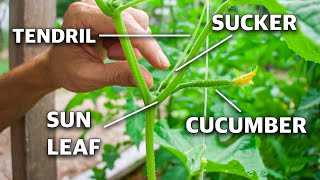
Pruning tendrils can help gardeners identify and manage pests and diseases more effectively. By removing excess foliage, gardeners have better visibility of the plant and can spot signs of infestation or disease early on. This enables them to take appropriate measures, such as applying natural pest control methods or removing affected areas to prevent the spread of pests or diseases throughout the plant.
4. Enhanced Cucumber Quality
Pruning tendrils can lead to higher-quality cucumbers. By removing excess foliage, gardeners improve the energy allocation of the plant, allowing it to focus its resources on producing higher-quality fruits. This can result in cucumbers that are more uniform in shape, size, and color. Additionally, improved air circulation and sunlight exposure contribute to the development of crisp, flavorful cucumbers.
5. Easier Harvesting
Pruning tendrils can make it easier to harvest cucumbers. By removing excess foliage, gardeners create more space and visibility around the cucumbers, making it simpler to locate and pick ripe fruits. This can save time and effort during the harvesting process.
In conclusion, pruning tendrils on cucumber bushes offers numerous benefits for plant health, productivity, and overall cucumber quality. By promoting air circulation, enhancing sunlight exposure, facilitating pest and disease management, improving cucumber quality, and simplifying harvesting, gardeners can optimize the growth and yield of their cucumber bushes.
When to Prune Tendrils on Cucumber Bushes
Pruning tendrils on cucumber bushes is an important part of maintaining plant health and promoting better fruit production. However, it’s essential to prune at the right time to ensure you don’t harm the plant or reduce its ability to grow. Here are some guidelines on when to prune tendrils on cucumber bushes:
1. Start pruning when the plant is well-established
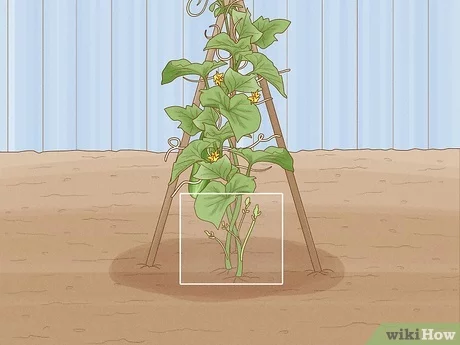
It’s best to wait until your cucumber plant has developed a strong root system and is well-established before you start pruning. This usually happens about 2-4 weeks after transplanting the seedlings or when they reach a height of 6-8 inches.
2. Look for excessive growth and tangle
Inspect your cucumber plant regularly and keep an eye out for excessive growth and tangled tendrils. These can hinder air circulation, provide hiding places for pests, and reduce sunlight exposure to the plant’s leaves. If you notice any of these signs, it may be time to prune the tendrils.
3. Prune in the morning or evening
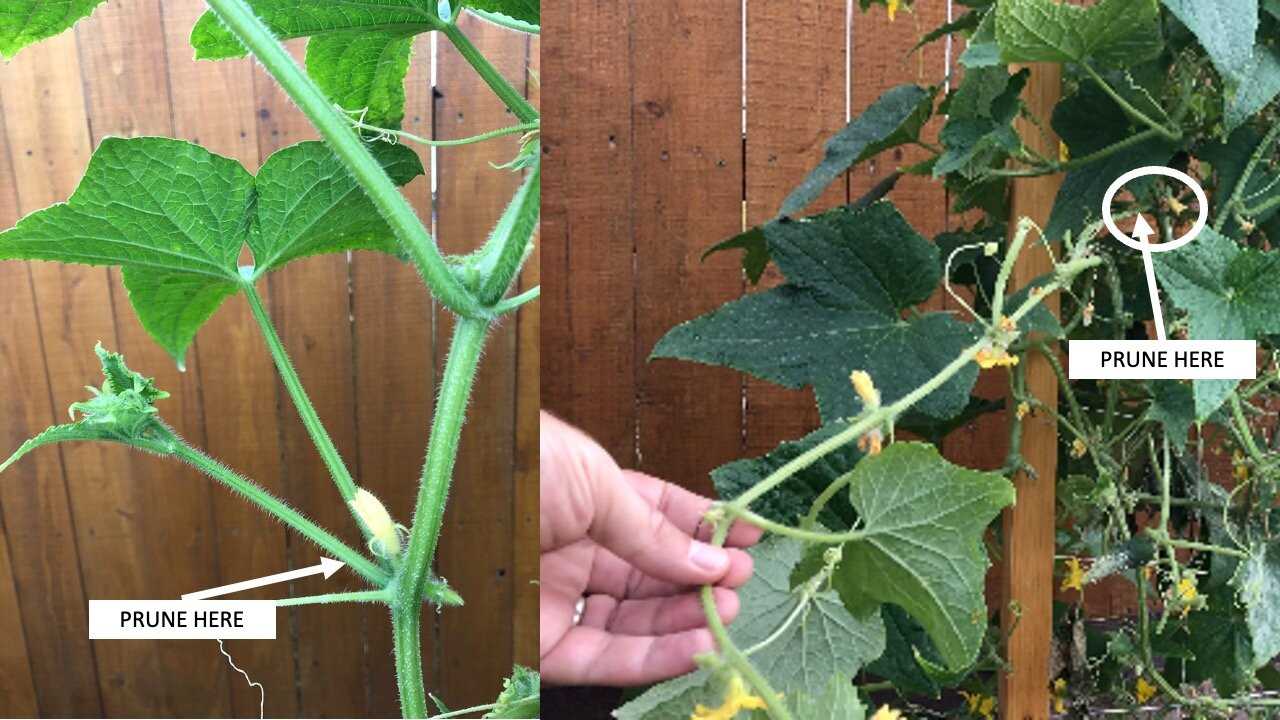
It’s best to prune cucumber tendrils during the early morning or evening when temperatures are cooler. Pruning during the hottest part of the day can cause stress to the plant and increase the risk of wilting or damage.
4. Remove only the damaged or excessively long tendrils
When pruning the tendrils, focus on removing the damaged or excessively long ones. These can be easily identified by their brown color, dry texture, or by their length extending far beyond the main plant structure. Use clean, sharp pruning shears to make clean cuts without injuring the main stem or other plant parts.
5. Avoid pruning too heavily
While it’s important to prune tendrils for better plant health, be mindful not to prune too heavily. Removing too many tendrils can reduce the plant’s ability to climb and support itself. Aim to maintain a balanced structure where the plant can still effectively latch onto trellises or other support systems.
By following these guidelines and pruning your cucumber tendrils at the right time, you can help ensure a healthier and more productive cucumber crop. Regular pruning will improve air circulation, reduce pest infestation, and promote better fruit development.
Step 1: Prepare Pruning Tools
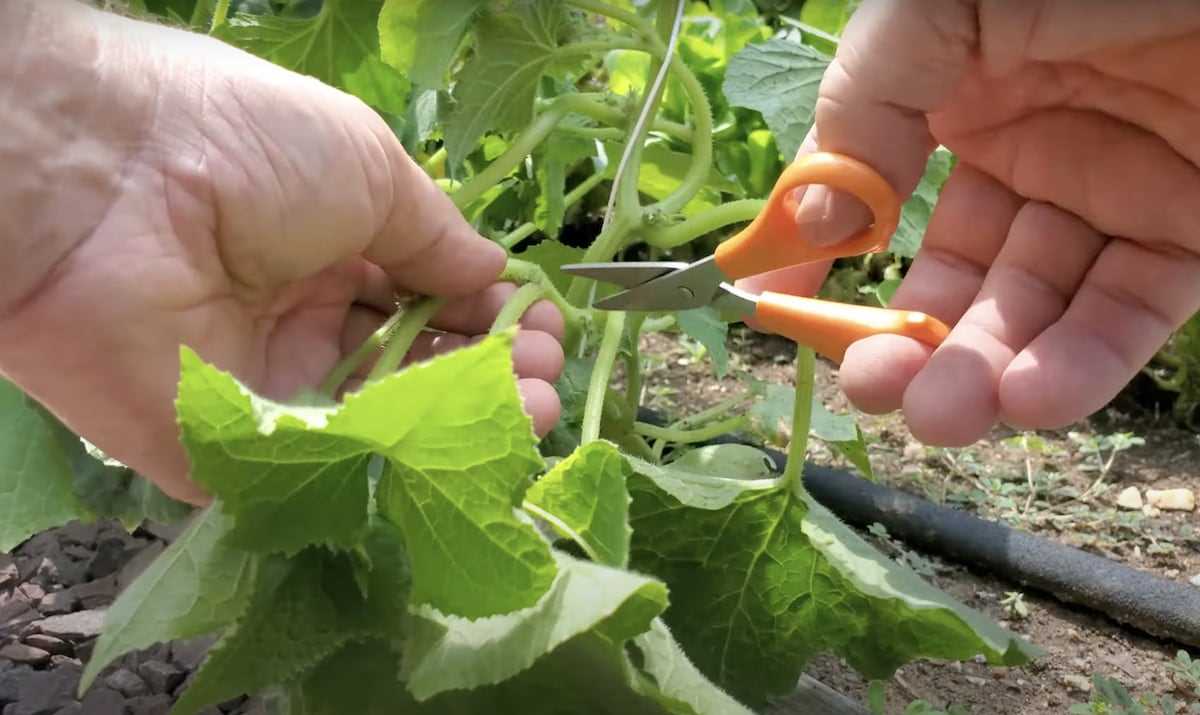
Before you start pruning the tendrils on your cucumber bushes, it’s important to gather the necessary tools. Having the right tools will make the pruning process easier and help you achieve better results. Here are the essential tools you will need:
- Sharp Pruning Shears: A pair of sharp pruning shears is crucial for making clean cuts on the tendrils. Make sure your shears are clean and sharp to avoid causing any damage to the plant.
- Gloves: Wearing gloves while pruning is important to protect your hands from thorns, prickles, or any potential injuries. Choose a pair of gloves that fit properly and provide a good grip.
- Disinfectant: It’s recommended to use a disinfectant to clean your pruning tools before and after pruning. This helps prevent the spread of diseases or pests between plants.
- Container or Bag: Have a container or bag on hand to collect the pruned tendrils. This will make it easier to clean up and dispose of the plant material later.
Once you have gathered all the necessary tools, you’re ready to move on to the next step of pruning the tendrils on your cucumber bushes.
Step 2: Identify the Tendrils to Prune
Once you have gathered your pruning tools and are ready to start, the next step is to identify the tendrils that need to be pruned on your cucumber bushes. Tendrils are thin, curly structures that develop on the cucumber plants and serve the purpose of supporting the plant and aiding in its growth.
Here are some key points to keep in mind while identifying the tendrils:
- Look for new growth: Tendrils are usually found on the newer, more actively growing parts of the cucumber plant. They often develop near the base of the leaves and stem.
- Identify long and healthy tendrils: Focus on identifying the long and healthy tendrils that are not damaged or diseased. These tendrils are the ones that are actively supporting the plant.
- Find tendrils that are deformed or damaged: Look for tendrils that are twisted, broken, or showing signs of disease. These tendrils are not functioning properly and should be removed.
By carefully examining each cucumber bush, you will be able to identify the tendrils that need to be pruned. Remember to only select the ones that are deformed, damaged, or no longer needed for the healthy growth of the plant.
Step 3: Prune the Tendrils
Once the cucumber bushes start to develop tendrils, it is important to prune them properly in order to maintain the plant’s health and encourage proper growth.
Here are the steps to prune the tendrils on cucumber bushes:
- Identify the tendrils that need to be pruned. Look for tendrils that are growing excessively long or are starting to wrap tightly around other parts of the plant.
- Using a clean pair of garden shears or scissors, carefully cut the tendrils at the base where they attach to the main stem or branches. Make sure to cut close to the plant to minimize any potential damage.
- Remove any tendrils that are growing in undesirable directions or are blocking sunlight from reaching other parts of the plant. This will help maintain proper air circulation and prevent the growth of diseases.
- Regularly check the cucumber bushes for new tendrils and repeat the pruning process as needed. It is best to prune the tendrils when they are still small and easy to manage.
Here are some tips to keep in mind while pruning the tendrils:
- Be gentle while handling the tendrils to avoid causing any damage to the plant.
- Prune the tendrils during the early morning or late afternoon when the weather is cooler and the plants are less stressed.
- Dispose of the pruned tendrils properly to prevent the spread of diseases or pests.
- Regularly monitor the growth of the tendrils and adjust the pruning frequency accordingly.
By properly pruning the tendrils on cucumber bushes, you can help promote healthy growth, increase fruit production, and prevent potential issues such as tangled or overcrowded plants. Following these steps will ensure that your cucumber bushes thrive throughout the growing season.
Step 4: Properly Dispose of Pruned Tendrils
Once you have finished pruning the tendrils on your cucumber bushes, it is important to properly dispose of the pruned tendrils. This will help prevent the spread of diseases and pests, and keep your garden clean and healthy.
Here are some steps to follow for proper disposal:
- Collect the pruned tendrils: Gather all the pruned tendrils in a container or bucket. It is best to use a dedicated container for garden waste to avoid mixing it with other household waste.
- Seal the container: Once you have collected all the pruned tendrils, seal the container tightly. This will prevent any pests or diseases from escaping and infesting other plants in your garden.
- Dispose of the pruned tendrils: Check if your local municipality has any specific guidelines for garden waste disposal. If there are no specific guidelines, you can add the pruned tendrils to your compost pile if they are disease-free. However, if the pruned tendrils show signs of disease or pest infestation, it is best to dispose of them in a designated green waste bin or take them to a composting facility that can handle diseased plant matter.
By following these steps, you can ensure that you are properly disposing of the pruned tendrils and maintaining a healthy garden environment. Remember to clean your tools after pruning to prevent the spread of diseases and pests. Happy gardening!
Step 5: Monitor and Maintain Pruned Tendrils
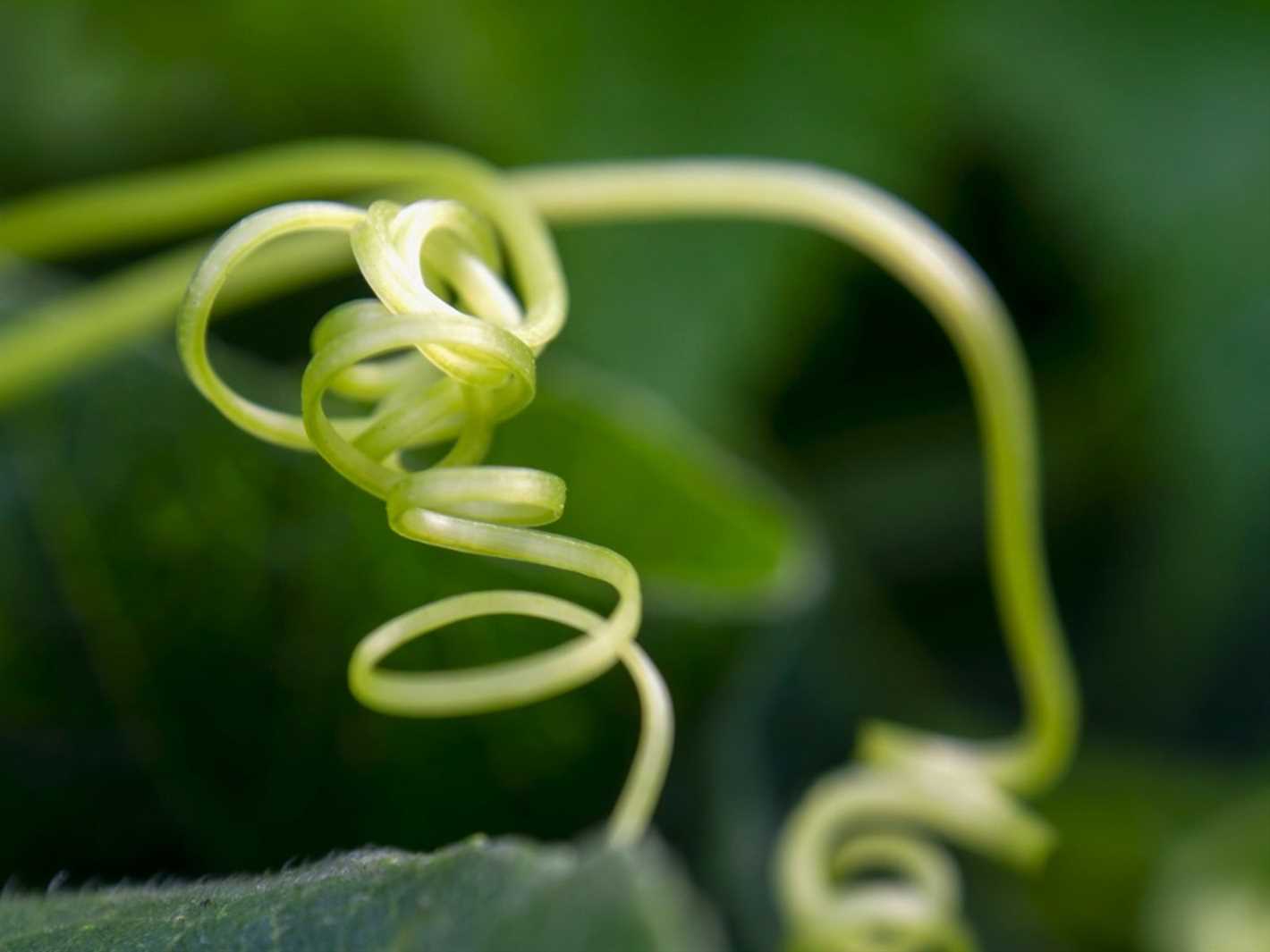
After pruning the tendrils on your cucumber bushes, it is important to regularly monitor and maintain them to ensure their continued health and productivity. Here are some key steps to follow:
1. Observing Growth
Monitor the growth of the pruned tendrils on your cucumber bushes. Look for any signs of new growth or damage that may need attention.
2. Removing New Tendrils
As new tendrils develop, carefully assess their location and potential impact on the plant. If they are likely to impede airflow or sunlight, or if they are growing in unwanted directions, gently remove them using pruning shears or your fingers.
3. Maintaining Tendril Length
Regularly check the length of the remaining tendrils and trim them if necessary. Maintaining shorter tendrils helps prevent tangling or overcrowding, promoting overall plant health and productivity.
4. Supporting Tendrils
If the remaining tendrils start to grow excessively long and require support, provide sturdy trellises or stakes to ensure they have proper support and don’t damage the plant or fruit.
5. Inspecting for Diseases or Pests
Regularly inspect the pruned tendrils and the surrounding cucumber plant for any signs of diseases or pests. Look for discoloration, wilting, or unusual spotting on the leaves or tendrils. If any issues are detected, take appropriate action to prevent further spread and damage.
By following these steps, you can effectively monitor and maintain the pruned tendrils on your cucumber bushes, ensuring their continued health and optimizing their productivity.
“Question-Answer”
Why is it important to prune tendrils on cucumber bushes?
Pruning tendrils on cucumber bushes is important because it helps to maintain the overall health and productivity of the plant. Tendrils can sometimes become excessive and overcrowd the plant, leading to decreased air circulation and increased risk of disease. Pruning them allows for better airflow, helps to prevent the spread of disease, and promotes more productive growth.
When is the best time to prune tendrils on cucumber bushes?
The best time to prune tendrils on cucumber bushes is when they start to become excessive, usually around 3-4 weeks after planting. It is important to not wait too long, as the tendrils can become tangled and more difficult to prune. Pruning should be done in the morning or evening when the weather is cooler, as this minimizes stress on the plant.
How should I prune the tendrils on my cucumber bushes?
To prune tendrils on cucumber bushes, you should start by identifying the excessive growth and selecting which tendrils to remove. Using clean pruning shears, make a clean cut at the base of the tendril where it attaches to the main stem. It is important to avoid tearing or damaging the main stem or other leaves. After pruning, you can tie the remaining tendrils to a trellis or support structure to help guide their growth.
What are the benefits of pruning tendrils on cucumber bushes?
Pruning tendrils on cucumber bushes provides several benefits. Firstly, it improves air circulation around the plant, reducing the risk of disease. Secondly, it helps to prevent the tendril from becoming tangled, which can hinder growth. Lastly, pruning promotes more productive growth by redirecting the plant’s energy to other areas, such as the development of more cucumber fruit. Overall, pruning tendrils is essential for maintaining the health and productivity of cucumber bushes.
Can I prune the tendrils on my cucumber bushes too much?
While it is important to prune tendrils on cucumber bushes, it is also possible to prune them too much. Removing too many tendrils can hinder the growth and stability of the plant. It is recommended to selectively prune excessive tendrils, rather than removing all of them. This allows for proper airflow and growth while still maintaining the plant’s structure and productivity.







